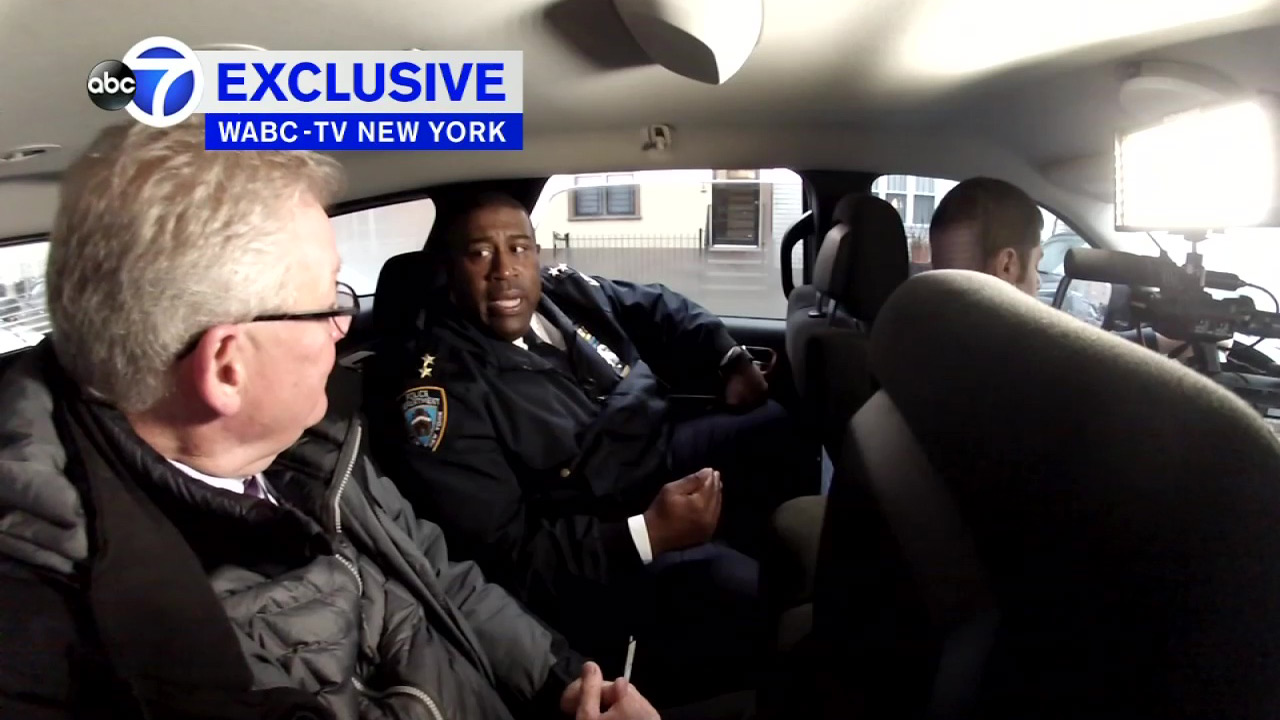Exclusive look inside the NYPD's Vision Zero program
NEW YORK (WABC) -- Vision Zero is the unprecedented effort to cut down on fatalities and to keep pedestrians, motorists and bicyclists safely moving together on city streets. Eyewitness News got an exclusive, behind-the-scenes look at how it works.
It could be one of the biggest challenges the NYPD is facing.
"You see how the traffic builds up out here, it builds up fast," one officer said.
"We're out here Wednesday mornings educating the public, doing proper enforcement and doing things that we know will contribute to the safety out here in the streets," said NYPD Assistant Chief Jeffrey Maddrey, one of the first borough commanders to tackle Vision Zero head on.
REPORTER: "It's going to be a tough sell."
MADDREY: "It's going to be tough, but we still have an obligation to push."
He gave Eyewitness News exclusive access to his command's rollout of 'Vision Zero Wednesday.'
"This one just ran a red light," he said of one car.
"Just be careful out here because a lot of people are getting hit," he said to an officer. "Just that little, 'I'll cut through the light', somebody just might wind up getting hurt and we don't want that to happen."
At the Patrol Borough Brooklyn North command center, and in 10 other precincts in the command, officers will concentrate on Vision Zero enforcement every Wednesday.
"Cell phone use, texting, improper turns, right of way to pedestrians, and seat belts," they are told to focus on.
Officers and their commanders now take this intensified effort out to the streets.
"I took the bike lane to make right turn, that's just about it," said driver David Barham, one of the first stopped by officers with us.
"There are a lot of hit and runs I've noticed, so I can understand why there are a lot of routine stops to detain the wild driving going on," he said.
And taking too many lives. The assistant chief points to the death of 39-year-old Evedette Sanchez, the mother of three killed by a hit and run driver in December.
There's also Jean Paul Guerrero, best known as DJ Jinx, who was also killed by a hit and run driver. These were two of four in one month alone.
"When you see things trending in that direction very fast, I have an obligation as the borough commander to make sure we get information out," said Maddrey. "Do some enforcement to prevent that stuff, educate our seniors, our children."
Which takes us first to PS 262 in Bed-Stuy, where students learn safety in a video.
"Put your phones and games away, look for cars that are turnin' your way," the video says.
And with personal interaction between students and officers.
"We still have to teach them how to have the same fun and to be safe at the same time, that's why we're here today," said Maddrey.
Seniors, though, are the most vulnerable. "The number one thing that prevents accidents is not crossing against the flow of traffic," said neighborhood coordination officer Timothy Cecchini.
At the Linden Center for Nursing and Rehabilitation, police talk to seniors, outfit their walkers and canes with reflective tape, and hand out safety flyers.
They hear first-hand the frightening close call of Cordelia Bradford and others.
"Maybe a foot from being knocked down, dead, killed," she said.
Out on busy and sometimes dangerous roads, community affairs officers also hand out other safety information. Concentrating on the trouble spots, highway patrol officers like Matthew Nader will also come in to run radar.
"I've seen guys up to 60 miles an hour coming down on Pennsylvania," said Nader.
REPORTER: "Are you serious, 60 miles an hour?"
NADER: "I had a gentleman doing 50 in a 25 coming through this area."
Looking back on this first day, Assistant Chief Maddrey continues to look for ways to improve the safety effort.
"When we reduce traffic, you know, fatalities or traffic accidents, that means people are safer," he said.
And Vision Zero moves closer to its goal.







